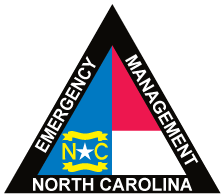
Emergency Services
FOR EMERGENCIES, DIAL 911 | NON-EMERGENCY, DIAL 252-747-8000
The Greene County Emergency Services Department coordinates local, State and Federal resources to expedite response and recovery from man-made and natural disasters. The Department plans for the four phases of Emergency Management which include mitigation, preparation, response and recovery to all types of disasters and emergencies.
Latest Information:
Sign up for CodeRED Alerts
CodeRED® is a FREE community notification system available to Greene County residents that will send you alerts concerning time-sensitive and/or emergency information that may impact your area via phone calls, text messages, emails, and social media.
E-911 Communications Center
The Greene County E-911 Communications Center operates 24 hours a day, 7 days a week.
Our goal is to provide the most efficient service possible to ensure a quick and appropriate response to emergency situations.
We operate with a staff of 2 Telecommunicators per shift.
Phone: 252-747-8000
 The County provides three (3) county-owned ambulances for 24 hour, 7 day a week EMS coverage. Emergency Medical Services is available twenty-four hours daily, seven days weekly to Greene County citizens through the combination paid/volunteer EMS providers.
The County provides three (3) county-owned ambulances for 24 hour, 7 day a week EMS coverage. Emergency Medical Services is available twenty-four hours daily, seven days weekly to Greene County citizens through the combination paid/volunteer EMS providers.
Local Area Hospitals
Lenoir Memorial Hospital
100 Airport Rd.
Kinston, NC 28501
252-522-7000
Vidant Medical Center
2100 Stantonsburg Road
Greenville, NC 27835
252-847-4100
Wayne Memorial Hospital
2700 Wayne Memorial Drive
Goldsboro, NC 27534
919-736-1110
Wilson Medical Center
1705 Tarboro Street
Wilson, NC 27893
252-399-8040
 The Emergency Services Department is responsible for the coordination of County fire and rescue districts in order to develop a comprehensive emergency services system within Greene County. The Department conducts fire inspections of buildings within the county in accordance with the North Carolina Fire Prevention Code. The Department also assists local and State law enforcement with investigation of fires in Greene County. Greene County has eleven (11) volunteer fire departments that serve the county.
The Emergency Services Department is responsible for the coordination of County fire and rescue districts in order to develop a comprehensive emergency services system within Greene County. The Department conducts fire inspections of buildings within the county in accordance with the North Carolina Fire Prevention Code. The Department also assists local and State law enforcement with investigation of fires in Greene County. Greene County has eleven (11) volunteer fire departments that serve the county.
 The Emergency Services Department coordinates local, State and Federal resources to expedite response and recovery from man-made and natural disasters. The Department plans for the four phases of Emergency Management which include mitigation, preparation, response and recovery to all types of disasters and emergencies.
The Emergency Services Department coordinates local, State and Federal resources to expedite response and recovery from man-made and natural disasters. The Department plans for the four phases of Emergency Management which include mitigation, preparation, response and recovery to all types of disasters and emergencies.
Resources
- Greene County Emergency Operations Plan
- Neuse River Basin – Regional Hazard Mitigation Plan
- 2019 Novel Coronavirus Factsheet
- 2019 FEMA Forms
- Hurricanes: A Preparedness Guide
- Family Disaster Plan
- Family Disaster Supply Kit
- Special Needs Disaster Plan
- Special Needs Registry Application
- Preparing Your Pets for Emergencies
Local Emergency Planning Committee (LEPC)
The Greene County Local Emergency Planning Committee (LEPC) is a federally mandated committee with membership from business and industry; emergency response groups such as fire, medical and law enforcement; community groups; media; hospitals; environmental interest; and the general public. The mission of the LEPC is to effectively plan for emergencies involving hazardous materials. The LEPC is tasked with the responsibility for SARA Title III Environmental Compliance; HAZMAT training and exercises; Site-Specific Chemical Planning Program; coordination of chemical information to emergency responders; and maintenance of the county-wide emergency response plan.
The primary responsibility of the LEPC is to receive information about hazardous substances from industry and to use this information to develop comprehensive site emergency plans to handle emergencies. It is also responsible for establishing procedures and programs which make it easy for citizens to understand and have access to the information that industry submits.
The LEPC can assist you in obtaining chemical related information from industry in your neighborhood. Federal law requires LEPCs to establish procedures for receiving and processing requests from the public for information. Greene County Emergency Services has been designated as the official agency to serve as coordinator of this information. You may contact the Emergency Services Department for additional information.
Emergency Planning and Community Right-to-Know Act (EPCRA)
The Emergency Planning and Community Right-to-Know Act (EPCRA) of 1986 was created to help communities plan for emergencies involving hazardous substances. EPCRA requires hazardous chemical emergency planning by federal, state and local governments, Indian tribes, and industry. It also requires industry to report on the storage, use and releases of hazardous chemicals to federal, state, and local governments.
EPA EPCRA: http://www.epa.gov/epcra
North Carolina Tier II Reporting Requirements
Tier II reports are forms that organizations and businesses in North Carolina with hazardous chemicals above certain quantities, are required to fill out by the EPA. Known officially as Emergency and Hazardous Chemical Inventory Forms, Tier II Reports are submitted annually to local fire departments, LEPC and State Emergency Response Commissions (SERCs) to help those agencies plan for and respond to chemical emergencies.
To determine if you have chemicals in quantities that require Tier II reporting, check the EPA’s List of Lists: http://www.epa.gov/epcra/consolidated-list-lists
North Carolina only accepts Tier II information submitted through E-Plan
A single submission of Tier II information to E-Plan satisfies the requirements for individual submissions to the SERC, LEPC, and local jurisdictional fire department.
E-Plan Website: https://erplan.net/eplan/home.htm
You may contact the following for additional information:
Tier II Administration: North Carolina Division of Emergency Management
4236 Mail Service Center
Raleigh, NC 27699-4236
Phone: 919-825-2277
E-Mail: epcrareporting@ncdps.gov

Greene County Emergency Services
312 SE Second Street
Snow Hill, NC 28580
Phone: 252-747-2544
Staff

Greene County E-911 Communications
Phone: 252-747-8000
Greene County
229 Kingold Blvd • Snow Hill, NC 28580
Phone: 252-747-3446 • Monday – Friday, 8:00 am – 5:00 pm

